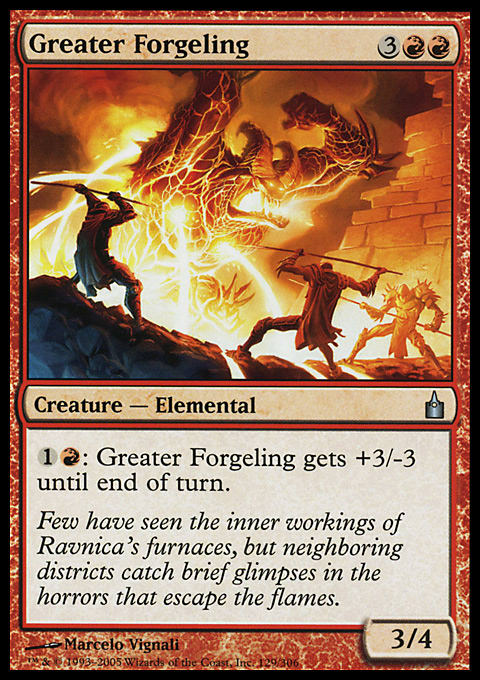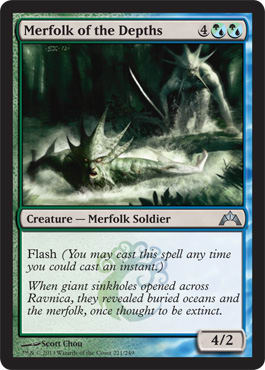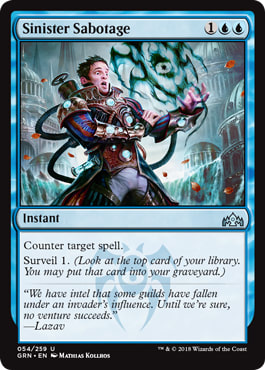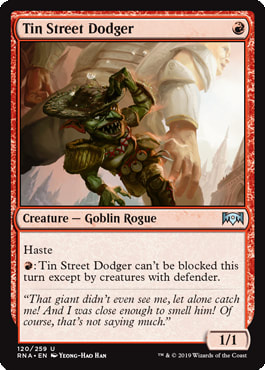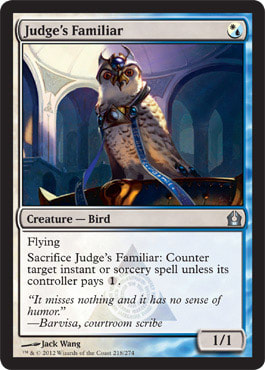In early 2022 we were greeted to something fresh in paper Magic: The Gathering: a Remastered set in the form of Time Spiral Remastered. This sort of release was nothing new to the greater game as we'd already seen Remastered sets with Tempest Remastered on Magic Online and Amonkhet Remastered, Kaladesh Remastered, and Shadows Over Innistrad Remastered on MTG Arena. This was the first time we got to actually experience this at a local game store as opposed to sitting in front of a computer. It provides players new ways to experience Limited environments from the past that they might have missed out on in a much more distilled way.
At the start of 2023, we got Dominaria Remastered, which - unlike Time Spiral Remastered - actually brought with it some new downshifts, or cards changing to a lower rarity. Unfortunately, most of the cards were practically unplayable when it comes to Pauper, the format of commons. Only one of them really made a splash: Spirit Link. The main reason was that it basically acted the same as an already playable card - Lifelink - but had old wording that allowed the ability to stack in multiples. That proved tremendously helpful in the highly aggressive metagame of the format in the last year or so.
Now Ravnica Remastered has been revealed in full and the upcoming release has some downshifts of its own! While the ones in this set are on a much smaller scale like Dominaria Remastered, there's actually a little more to chew on with these cards. As such, I want to cover all the newly downshifted commons and take a look at how they might affect the format going forward.
First, though, I'd like to take a quick look at two cards that actually didn't make the cut.
Both Skullcrack and Dryad Militant have repeatedly shown up in downshift wish lists and were quite notably not present in this set. For years, you'd see downshift discussions bringing up both as cards that could be printed at common within reason and would be unique tools for the Pauper format. The idea with Skullcrack is that it would help break up some of the struggles Burn decks faced for years: the hurdles of life gain and damage prevention. Dryad Militant was seen as a way to stop obnoxious Flicker loops and help deal with Flashback.
These days, while I think Dryad Militant might still be viewed as reasonable, the notion of downshifting Skullcrack brought a lot of disdain given the rise of Mono-Red over the last year or so. That makes a lot of sense, and also serves as a cautionary tale to strong downshifts entering the format (it should be noted that Monastery Swiftspear was a common wish list card for years). As it happens, Skullcrack showed up in the set but is still uncommon, where I imagine it'll remain for some time. Conversely, Dryad Militant wasn't even in the set at all. That may have just been due to Limited considerations, but if neither of these were to get downshifted here, I think it's safe to assume they won't end up at common anytime soon.
Greater Forgeling and Merfolk of the Depths
Okay, let's get this out of the way right now: these cards are stone unplayable. The only realistic reason that they were downshifted is because their power is more in line at the common rarity for modern sensibilities. As a result, they're much more reasonable at common for Limited - especially in what is essentially a Masters release aimed at more advanced players. It's always neat seeing these, but they simply don't have any real impact on the Pauper format. The rest might, though, so let's skip on ahead and focus on those cards instead.
Boros Elite
I love Boros Elite. As it happens, during Return to Ravnica-era Standard, I was playing a ton of Aggro lists. First Mono-Red Aggro, and then some Boros Aggro. This was largely due to how during the prior Standard season, I was playing a ton of Tempered Steel - which was an aggro deck in its own right. When the aggressive builds turned into more Boros than Mono-Red, a big reason was actually Boros Elite. One damage isn't much, but it swiftly snowballs into three and means you'll be punching through with some serious firepower. White Weenies has been a respectable force in the Pauper meta and so it's a fairly reasonable assumption this will show up as well. Pauper as an Eternal format is way speedier and has more tools to combat something like Boros Elite, though, so despite being historically good, time will tell if it can hold its own in the land of commons.
Sinister Sabotage
There was once a time where Sinister Sabotage was a solid role player in Standard - particularly for control decks. This downshift feels surprisingly in line with another downshift that happened in Iconic Masters: Dissolve. That card was similarly a Cancel with upside that saw a ton of play in Standard lists of the era only to end up at common in a later release. It saw absolutely no play and ended up as a forgotten relic. I'd bet many people reading this didn't even realize Dissolve was downshifted at all!
So then where does that leave Sinister Sabotage? Is it doomed to a similar fate where it seems potentially intriguing only to fall to the wayside and be left to the dregs of the Pauper format? Well, maybe, maybe not. As it happens, there are actually some reasonable use-cases for the surveil side of the card, most notably involving Tolarian Terror and Cryptic Serpent. Sure, you're going to want a more straightforward and cost-effective counterspell (like - you know - Counterspell), but I could see this showing up as, say, a one or two-of in these Terror variants. Will it stick around? Probably not, but it's likely worth trying out and seeing if it might be better than it looks at face value.
Tin Street Dodger
I know what you're thinking with this one, because it's the same thing that was echoed by a lot of the player base at first: isn't Gingerbrute just better than this?
In a general sense, yes, Gingerbrute is better. Both cards do more or less the same thing, except that Gingerbrute doesn't solely rely on Red mana to function. Similarly, there aren't many creatures with haste that see active play in the format, meaning Gingerbrute is quite tough to block at all. On the other hand, Tin Street Dodger just gets stonewalled - literally - by Walls Combo, aka Wonderwalls.
There are differences, though, which makes Tin Street Dodger a little more interesting to look at by comparison. There's two main use-cases that are relevant here: Goblin Grenade and Foundry Street Denizen. Goblin Grenade's a fairly simple one. Play a Goblin-heavy deck and Goblin Grenade has a lot more potency and playability. When played with a cheaply evasive Goblin, you get to push that much more damage through. It's a similar case with Foundry Street Denizen, which shows up in certain Goblins and Red Deck Wins builds, which gets buffs from using Tin Street Dodger as a quick-hitting bit of damage. Neither sees tremendous play (though Goblin Grenade is seeing a bit of resurgence in the wake of Monastery Swiftspear's banning) so the utility of Tin Street Dodger is low. However, it has a role to play in the format, even if it's a small one.
Sprouting Renewal
I find Sprouting Renewal to be a bit of a difficult one to evaluate. It's actually a pretty great card. It was highly playable in Limited and saw a decent amount of Standard play as well since it could double as both artifact and enchantment hate or be a creature - whichever you needed more. That's some solid flexibility that doesn't see much play in formats like Pioneer and Modern only because you have Reclamation Sage - which is basically both sides in one package. Pauper lacks Rec Sage, though, so perhaps there's a hunger for such an ability.
There're two real flaws with this, though. The first is that there aren't a lot of Green decks that can utilize the Convoke ability well. For the most part it's basically Walls Combo and Elves that could use it, as well as more fringe strategies like Sprout Swarm, Presence of Gond, and - much as I hate to say it - Stompy. Most of these decks want artifact/enchantment hate in some form, but they often gravitate toward something like Gleeful Sabotage because it hits multiple targets, which is useful against Affinity. What's more, many of these lists run cards like Winding Way and Lead the Stampede to find creatures, and having a spell like this doesn't lend well to that play style. As a result, what you have is a cool and quite playable card that feels homeless. It might show up here and there, and I'd love for it to make a real splash, but realistically I'm not sure it has enough going for it in the greater metagame.
Judge's Familiar
When it comes to fan favorites, Judge's Familiar sure is one. It's been a frequent downshift wish list card, and it's hard not to see why. The card has a historical tournament pedigree and is honestly innocuous enough in spite of that that it feels more like a sweet tool for the format as opposed to something that could potentially break it (like Monastery Swiftspear or Peregrine Drake).
The big hurdles it has for the format are 1.) the fact that it's an obvious on-board trick that can be reasonably played around and 2.) the difficulty in giving up value to run it. The obvious place for this would be something like Blue-based Tempo lists. Unfortunately, most of those rely heavily on synergy between the Faerie-Ninja package or else struggle for space against the strength of big creatures in the Tolarian Terror builds. The question ultimately ends up being is running copies of Judge's Familiar worth potentially diluting the core of those packages? Time will tell, but at least expect it to show up the first weeks after the release of Ravnica Remastered as players test it out.
For more White-focused builds where this might also see play, you have to wonder if it actually goes the distance enough. A Judge's Familiar in a Blue deck can use the Force Spike effect to wear out opponents' resources, making them more susceptible to other countermagic or further resource drains. In White decks that lack such further follow up interaction outside of, say, Mana Tithe, Judge's Familiar gets a lot more difficult to justify running. Time will tell if it ends up making the cut or not.
Slitherhead
Slitherhead is such an oddity. At the time of its release, it was an incredibly hyped card. There was a lot of talk behind it because of how the Scavenge ability cost nothing to activate, and how many of Magic's most busted things revolve around cards being free. Well, as it happens, I always remembered it being cool, but couldn't remember anything actually playing it. I went and ran it through MTGTop8.com to see if I could find any lists from when it was in Standard to see if it actually saw play anywhere - and I got zero results. I thought it was a fluke at first, but no, there were no lists I could find on a quick search running it.
When it comes to Pauper, I think it runs into a similar issue. There just isn't really a good home for it. I saw some early talk about Tortured Existence lists, but those decks rely on churning through and looping cards out of your graveyard. By comparison, Slitherhead is more of a one-shot and doesn't do a lot to impact the game. Its best use is probably somewhere in Bogles lists as a means of edict fodder that can then turn into a buff for your suited up Bogle. It's got some pretty stiff competition with cards like Cartouche of Solidarity and Young Wolf, though, so I imagine the overall impact will be minimal at best.
That does it for another Pauper review! This one seems a bit more bite-sized, and for good reason. There's not a ton of meat to this set compared to, say, Commander Masters earlier in the year, but maybe that's for the best. Instead, there's a bunch of solid role players that will probably see play here and there. It'll be interesting to see how they may or may not impact the format going forward! I'll be back soon enough in just a few weeks to talk about the next set - Murders at Karlov Manor - which is already shaping up to have some interesting additions for Pauper such as Deduce and Demand Answers. I'll see you all then!
Paige Smith
Twitter: @TheMaverickGal
Twitch: twitch.tv/themaverickgirl
YouTube: TheMaverickGal
















